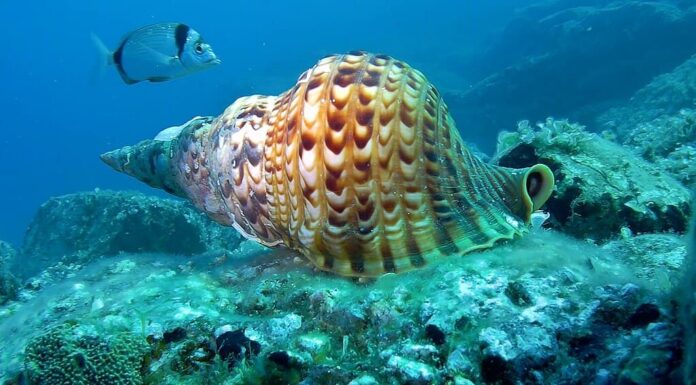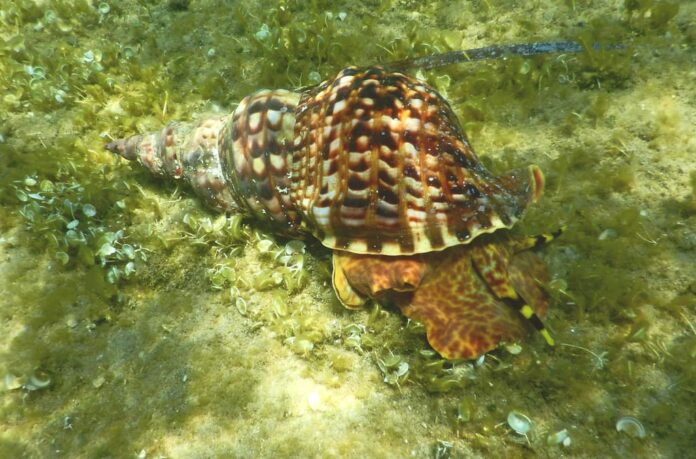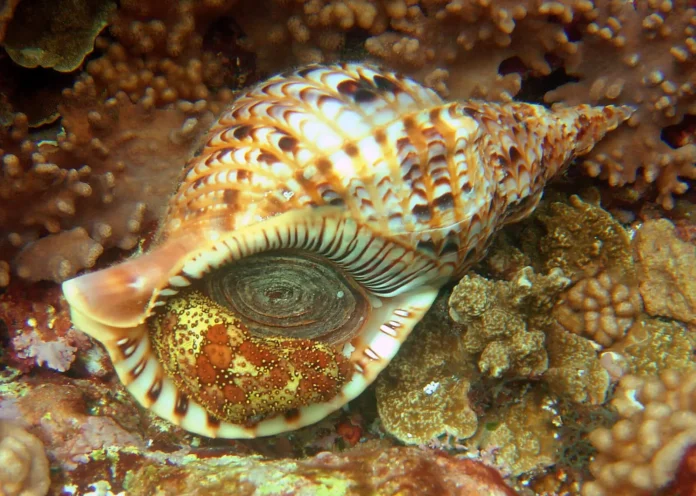We don’t really talk much about snails here, so let’s do that today. Triton’s trumpet is a very interesting marine gastropod when it comes to appearance and lifestyle. If you haven’t heard of this snail species before, there is a lot to learn about it. Don’t forget to share your thoughts on Triton’s trumpet, it is one of a kind.
1Appearance

A Triton’s trumpet shell has broad and flat spiral ribs along with brown, white, and yellow colors that look absolutely stunning. It has a well-developed head with eyes and tentacles as well as a mouth on a protractible proboscis. Along with that, it has a broad muscular foot that it uses for crawling. You know a snail is huge when its size can reach up to 60 centimeters long like the Triton’s trumpet. In fact, it is one of the biggest mollusks in the coral reef which is very impressive. Inside that massive shell is a soft body mass that needs protection from the shell.
2Feeding & Habitats

The distribution of the almighty Triton’s trumpet is throughout the Indo-Pacific oceans as well as the Red Sea. They live at a depth from 4.5 to 22.5 meters, usually they live deeper in coral-rich habitats. These large snails are fond of rocky to sandy bottoms with coral reefs. Across their range, they are one of the very few sea creatures that feed on crown-of-thorns starfish and cushion stars. This feeding habit is very beneficial to the reef community because these starfish are pests to corals.
As a predator, a Triton’s trumpet will start chasing its prey once it detects the smell. It is true that snails are slow but their prey is even slower so chasing one is not too difficult. Apart from starfish, they also feed on sea cucumbers, sea urchins, and other mollusks that they can catch as well. The moment it catches up with prey, a Triton’s trumpet will grab its prey with its muscular foot. Then it uses its serrated radula to tear through the prey’s skin before releasing its paralyzing saliva. When the meal is ready, the snail will start feeding; slowly. When it comes to smaller prey, it does not even bother to paralyze it since it will just swallow the prey whole.
3Human Use
When it comes to snails, their shells are used by people for various purposes while their meat is edible. Triton’s trumpets are one of the snails whose shells people use as decorative objects, tourist gifts, and “trumpets”. Traditionally, Hawaiians used their shells as ceremonial trumpets and this tradition is similar throughout many islands of the Indian and Pacific Oceans. Though their population is under protection by countries such as Australia, Fiji, and India, selling them is still legal. This is why you still can find them in many shell shops around the world as well as online shops. The real threat to their population is actually habitat loss due to the depletion of the ecosystem. As a result, Triton’s trumpets are classified as Vulnerable on the IUCN Red List.
Related Post: Shellfish Types





